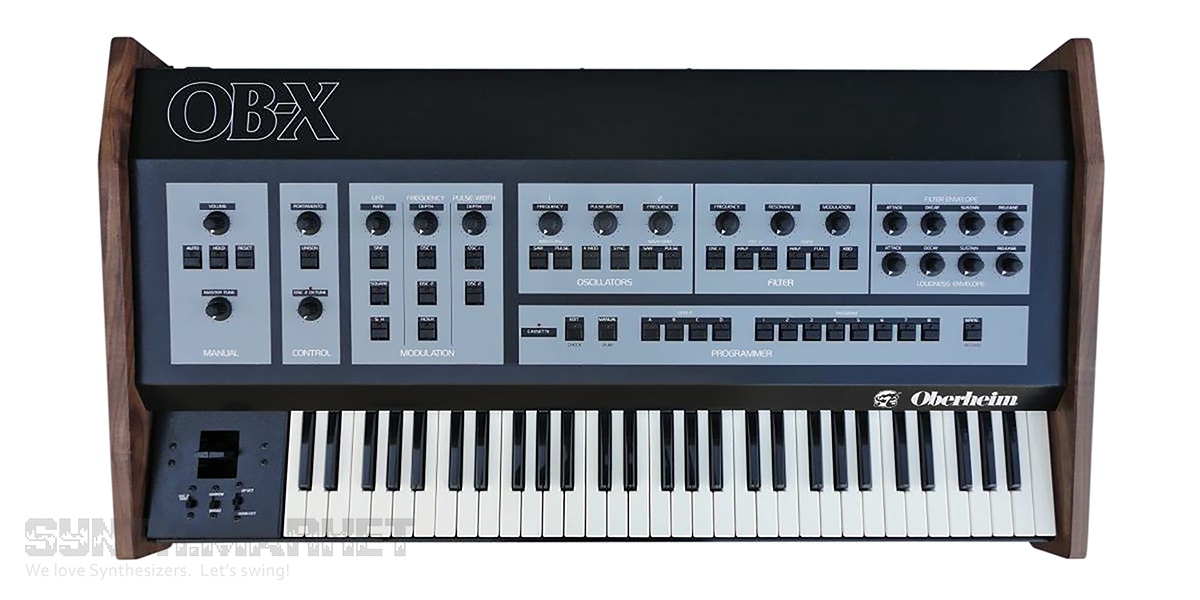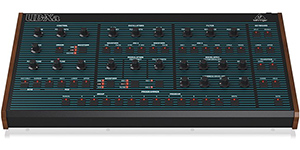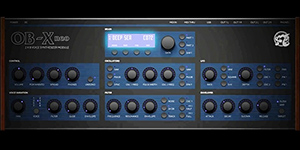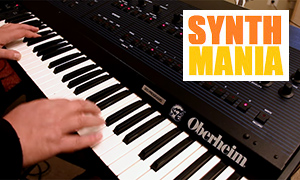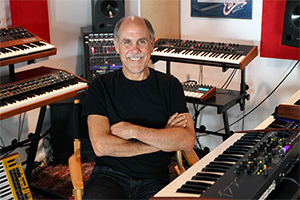In 1978, Sequential Circuits company released Prophet-5, which immediately became incredibly popular due to the ability to save all the parameters of the synthesizer in the presets. Tom Oberheim responded with OB-X.
The synthesizer has a hybrid structure: the sound is produced and processed by analog discrete circuits, and the processing parameters are controlled by the Zilog Z80 microprocessor.
OB-X was released in three configurations with four ($ 4,595), six ($ 5395) and eight ($ 5995) voices. Voices were kind of separate boards, which could be installed independently. There were two VCOs, VCAs, VCFs and two EGs per each voice board.
Voltage-controlled oscillators have a discrete structure similar to VCOs in SEM modules. Frequency control is performed by microprocessor voltages - this approach provides pure analog sound with high stability of the system, as well as automatic tuning of each oscillator. The VCO produces a sawtooth waveform that could be further converted to a square wave.
The voltage-controlled low-pass filter is built on CA3080 chips, the same ones were used in SEM modules. The filter has a two-stage structure, which allows you to achieve a slope of 12 dB per octave. It is possible to set the cutoff frequency for each filter, as well as to adjust the depth of resonance.
OB-X comprises two envelope generators per each voice. Like many synthesizers in the early 80's they have no discrete circuitry, they’re built on specialized CEM3310 chips. It is possible to adjust the attack time, release, pedestal and sustain for each envelope generator.
To create complex sounds, a modulatable LFO is provided, the signal of which can be sent to modulate VCO (FM or PW). The oscillator produces a triangular (on the panel it is mistakenly designated as a sine wave), a square wave and a S&H wave.
Oberheim OB-X was used in the compositions made by Ambrosia, Eurythmics, Japan, Jean Michel Jarre, Killing Joke, Madonna, Prince, Queen, Rush, Styx, Van Halen.





